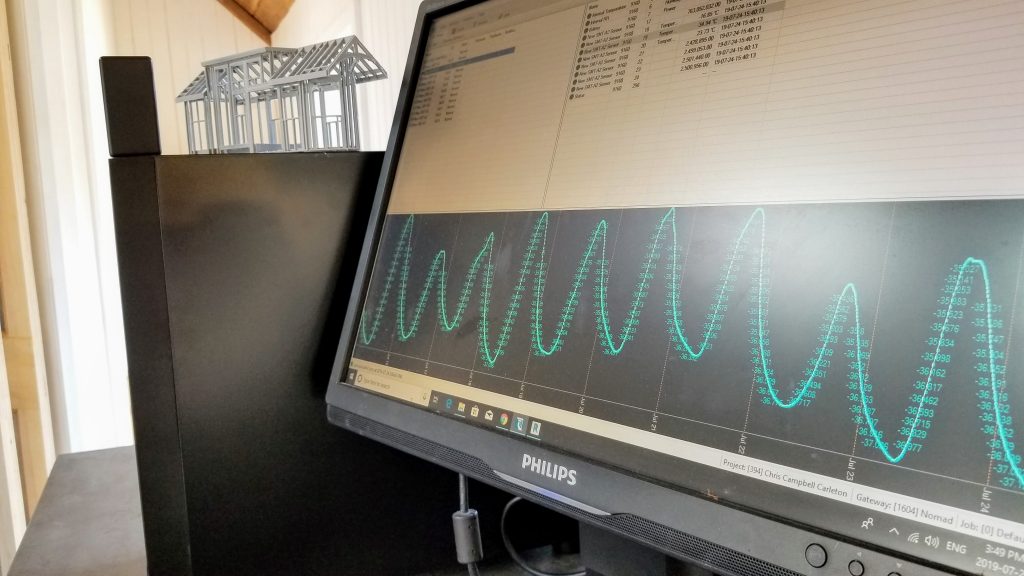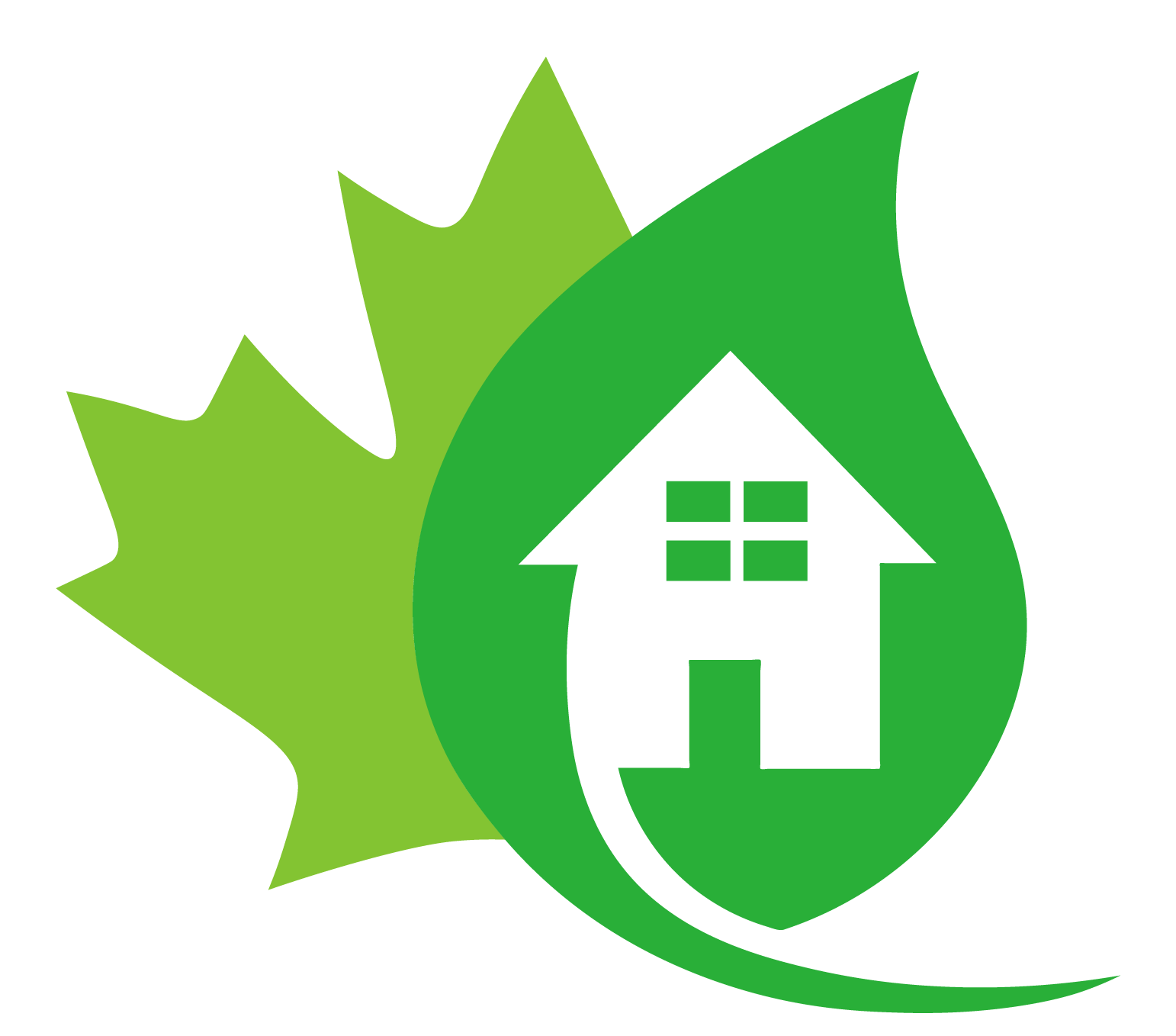The Northern Nomad is now its research phase, a living lab where students of Carleton can test out new technology and learn in real time how buildings perform in the harsh Canadian climate. The Nomad offers plenty of opportunity to learn and explore, and there are several active research topics that are being investigated right now! Find out more about some of our research below.

ROOF-INTEGRATED PHOTOVOLTAICS
Conventionally, solar panels are mounted on a roof in order to integrate energy production to an existing structure. For this project we took integration to another level and based the entire roof design on optimizing the angle for solar energy production. The panels are even integrated as our primary roofing material, saving on weight and giving the roof a smooth glass-like finish. This is a completely new design which may have moisture infiltration and thermal stresses that couldn't be predicted in the design phase, so these things will need to be monitored over time to make sure they're effective. Another cool thing about the roof is the air gap left under the panels. Solar panels get extremely hot on a typical roof making them less efficient, we believe we can alleviate this with a 2 inch air gap beneath the panels that can be used to cool the panels from below. This heating affect beneath the panels may also be used to reduce energy use in the winter by running it through the Energy Recovery Ventilator. To find out of this is a viable option, we've installed an array of temperature and humidity sensors that will monitor the thermal distribution beneath the panels and allow us to get a sense of the viability of this passive heating opportunity.
ENERGY RECOVERY VENTILATION
Energy Recovery Ventilation is known to be an energy efficient way provide fresh air to a space, which reduces health symptoms related to high levels of internally generated pollutants from occupancy (CO2, CO, NOx, etc). Airtight buildings don't allow air to naturally pass through the walls and around the windows and doors, so ERVs and HRVs are used in modern buildings to bring in fresh air from outside. In addition to controlling pollutants though, ERVs have an impact on humidity levels, which can improve human health (40-60% RH is ideal) and mitigate condensation-related issues. Without ventilation, homes often exhibit condensation on windows which can cause mould growth. We want to quantify the performance of the ERV in a real world setting and study the impacts that it has on indoor humidity. This can advise future designs to help improve occupant health and building resiliency.
VACUUM-INSULATED PANELS
The easiest way to insulate a building is to sacrifice floor area and make the walls extra thick so you can pack in more insulation. This isn't a solution we could exercise in our tiny house, as our floor area is already limited by the footprint of the trailer that made up our foundation. To get around this limitation, we borrowed a technology from the refrigeration industry: Vacuum-Insulated Panels (VIPs). These behave in similar fashion to the popular double walled vacuum steel water bottles, they have very little material, or even air, to conduct heat across giving them an excellent ratio of insulation compared to their thickness. For perspective, a half inch of VIP panel has the same insulative qualities of a three inch thick sheet of rigid insulation foam. The integration of VIPs provide exceptional thermal performance in such a thin envelope, but research at Carleton has shown that their performance degrades over time due to moisture exposure. We want to monitor their exposure to moisture in the envelope to see how they hold up in a real application. Additionally, they act as a vapour barrier, which means that they can trap moisture in the envelope. Decades of work in the building industry has determined how to balance the drying and wetting of constructions in the walls of buildings to ensure resilience, and we want to see how this new type of construction performs.
ATMOSPHERIC WATER GENERATION
One big limitation of being off-grid and in a remote location is access to fresh and clean water. If there's a river nearby you can purify it for drinking, or if you've got a stationary house you can drill a well, but what happens when you need to be on a completely mobile platform? It just so happens that we are constantly surrounded by water all the time, it's in the air in the form of humidity. One technology we want to look into and implement in the Northern Nomad is an Atmospheric Water Generation system. This will allow us to take the outside air in through a vent and extract the water using what is essentially a dehumidifier so we can then purify it, and use it to meet the houses water needs. Right now we want to look at the scalability of this technology, and see what the ideal outdoor conditions are for operation and water collection. The Generator will be in an enclosed cabinet so it's sealed off in its own environment, protecting the rest of the house from the infiltrating hot and humid air in the summer. Some of the systems that have been looked at for this application can produce up to 100 liters of fresh drinkable water every day! While dehumidifiers are often energy intensive, ours will operate off of the electricity we produce through solar, making use of the abundant natural energy that we've collected.

